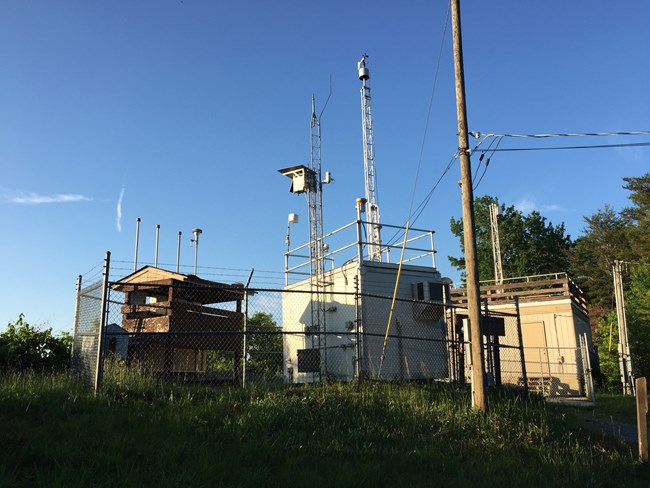
NPS Photo
The Southern Appalachian Mountains are the highest in eastern North America, and combined with predominant weather patterns, tend to trap pollutants such as those produced by power plants, factories, and automobiles. Great Smoky Mountains National Park (GRSM) experiences some of the highest deposition rates of sulfur and nitrogen in North America. These pollutants are deposited in the form of rainfall, dry particles and cloud water. Some high-elevation park streams have the highest nitrate levels of any systems in the country that drain undisturbed watersheds.
Research in the Smokies has shown that some high-elevation soils in the park are receiving so much airborne nitrogen they are suffering from advanced nitrogen saturation. This limits the availability of nutrients to forest plants and increases the presence of toxic ions such as aluminum that can harm vegetation and aquatic biota. It is suspected that similar conditions may exist in the high-elevation portions of Blue Ridge Parkway. In the Appalachian Highlands Network (APHN), Great Smoky Mountain National Park is a designated Class I air quality area, while the other three network parks are Class II air quality areas. Great Smoky Mountain NP has on-site ambient air-quality monitoring; the other parks have nearby monitors. The air pollution issues of most significant concern for the network are ozone, acid deposition and visibility. An ozone injury risk assessment indicates the risk of injury is high in the Smokies and on the Blue Ridge Parkway.
To learn more about air quality monitoring and research, visit Meet the Managers: Air Quality Monitoring - Great Smoky Mountains National Park (U.S. National Park Service).
Last updated: December 2, 2024
